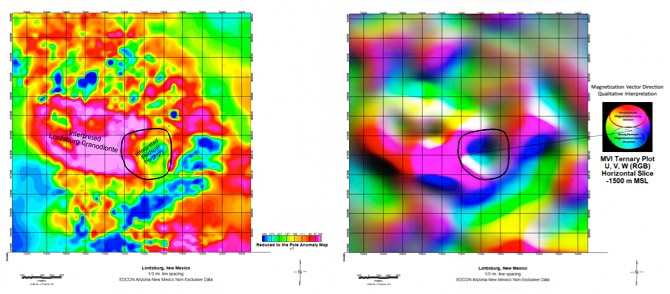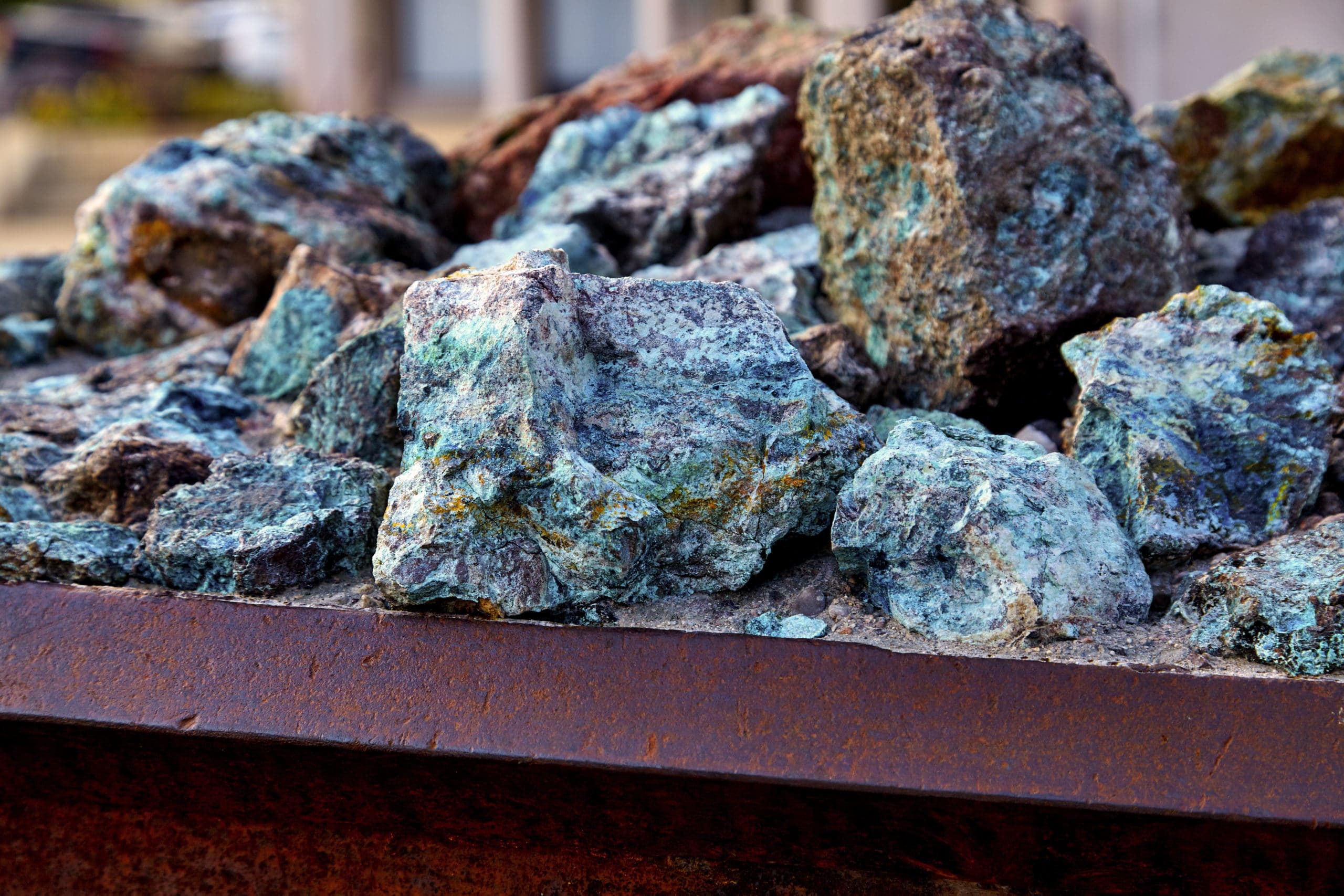To verify the potential for Magnetization Vector Inversion (MVI) to identify deep intrusives related to copper porphyry systems, veteran copper explorer Carl Windels has compiled several North American examples where the technique works.
Among the known deposits the geophysicist tested using the MVI method are the continent’s most famous, including Bingham Canyon in Utah and Morenci in Arizona.
“The compilation was a way to convince myself that I would have consistent results for known copper porphyries so that and I could start applying MVI to buried targets with confidence,” says Windels, a consultant who previously worked for producers such as Asarco and Texas Gulf Sulphur. “The ternary plot (UVW susceptibility) delineates variations in magnetization vector direction by colour and if I can map the intrusive source, then I can identify other similar features on the project.”
MVI, a feature VOXI Earth Modelling, provides a more reliable representation of subsurface geology than traditional inversion because it accounts for varying directions of magnetization. From his experimentation so far, Windels believes the technique may have the potential to age-date lithologies.
Windels finds new targets by identifying regional structures near known porphyry systems using aeromagnetic data. By creating 3D magnetic inversions with both constrained and unconstrained projected magnetic field components and a proprietary inversion using FastMag3D, he interprets the deep-seated intrusive related to the porphyry system and locates apophyses of the intrusive in preparation for more detailed follow-up to identify drill targets.
“I think it’s significant that the data that is easiest to visualize is the unconstrained projected magnetic field component and the unconstrained MVI Ternary Plot (U, V, W RGB). It’s a smooth, well-defined feature.”
Windels first tested MVI last year at the Lordsburg deposit in New Mexico, where – a decade ago – he contributed to the discovery of copper-gold porphyry mineralization by Entrée Gold (now Mason Resources). Mason Resources has not advanced the target over the past several years but maintains interest.
The project provided an example Windels is intimately familiar with. “MVI produced a very unique anomaly on what I believe is the intrusive source of mineralization. There is only one anomaly with that particular colour pattern in a 25-kilometre by 25-kilometre area surrounding Lordsburg. That’s what got me intrigued.”

Lordsburg was one of 25 regional targets Windels and his former partner identified for Entrée Gold using proprietary methods. Two of the five targets that Entrée drilled were ‘technical successes’ in that they identified mineralization and blind intrusive at more than 900 metres, while one tuned out to be a lakebed about 500m below surface. “MVI may have told me don’t drill that thing!” says Windels.
Windels is currently applying MVI to a sedimentary exhalative deposit (SEDEX) for the first time. The technique is working because the SEDEX deposits along the trend in Brazil where the project lies are pyrrhotite-rich. MVI shows differences in the magnetic highs, allowing clearer identification of the deposit’s marker bed.
“I believe it helps identify the stratigraphic timeline for the known deposits and gives us a tool to follow the zone undercover,” he says.





